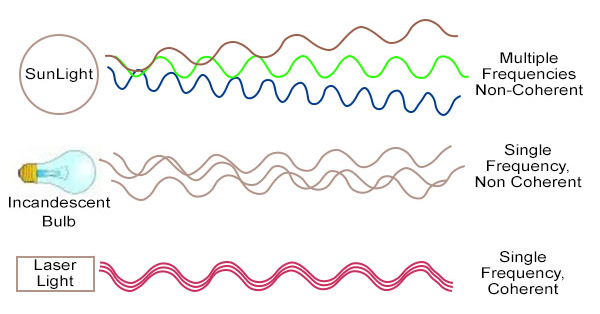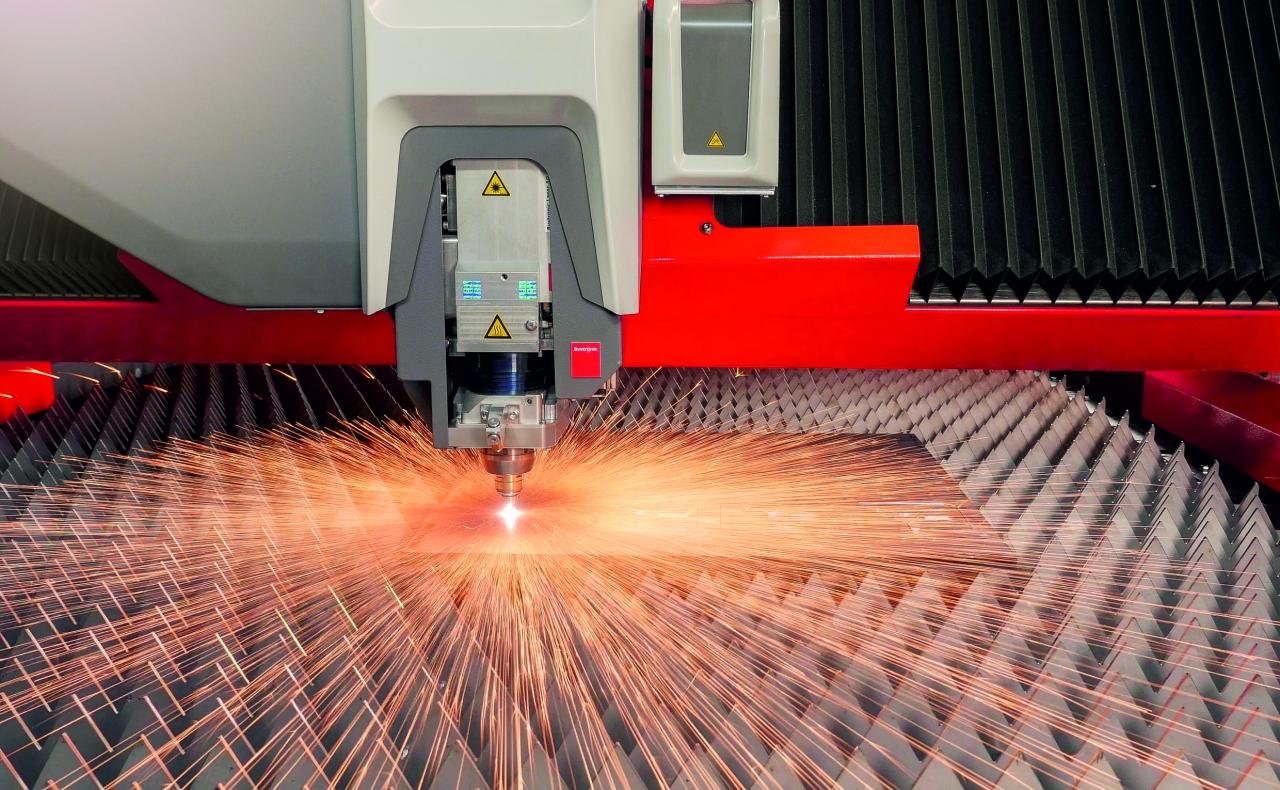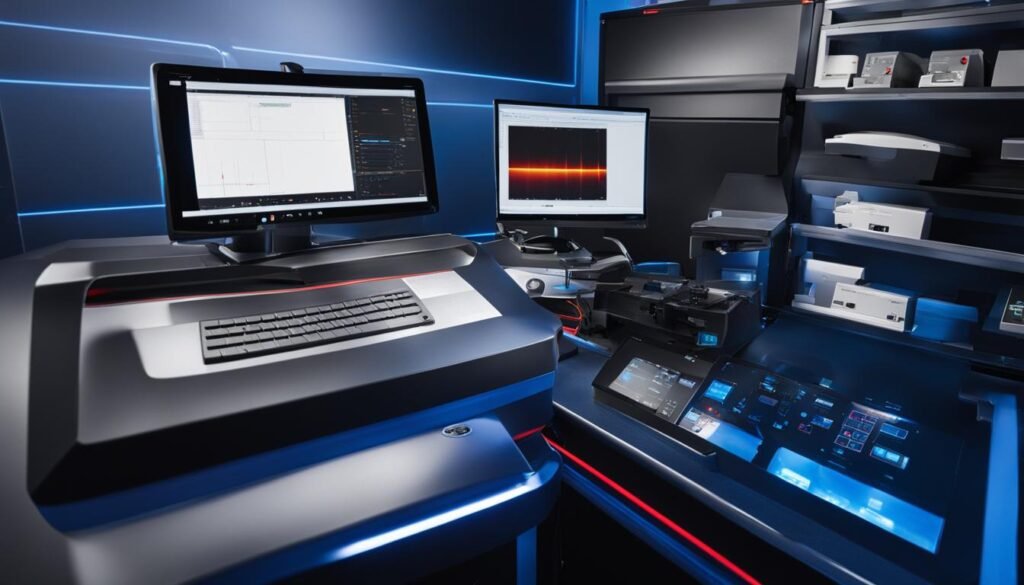Contents
- 1 Section 2: Laser Coherence Unveiled
- 2 Section 3: The Elegance of Monochromatic Light
- 3 Section 4: The Interplay of Coherence and Monochromaticity
- 4 Section 5: Advancements and Future Prospects
- 5 The Basics of Lasers and Photons
- 6 Laser-Tissue Interaction and Applications
- 7 Selection Criteria for Laser Sources
- 8 Laser Diodes: An Overview
- 9 Continuous Wave (CW) Lasers: An Overview
- 10 Pulsed Lasers: An Overview
- 11 Selecting the Best Laser for Your Application
- 12 Wavelength Considerations in Laser Selection
- 13 Beam and Optical Parameters in Laser Selection
- 14 Laser Integration Levels: Choosing the Right Complexity for Your Application
- 15 Conclusion
- 16 FAQ
- 16.1 What is laser monochromaticity?
- 16.2 How is laser monochromaticity achieved?
- 16.3 What factors are considered when selecting laser optics?
- 16.4 What materials are commonly used in laser optics?
- 16.5 Why is laser monochromaticity important in laser-tissue interaction?
- 16.6 What are the different types of monochromaticities and their applications?
- 16.7 How do laser diodes differ from other types of lasers?
- 16.8 What are continuous wave (CW) lasers used for?
- 16.9 What applications are pulsed lasers suitable for?
- 16.10 What criteria should be considered when selecting a laser?
- 16.11 How is the optimal laser wavelength determined?
- 16.12 What are the important beam and optical parameters in laser selection?
- 16.13 What are the different integration levels in laser selection?
- 17 Source Links
1.1 Invention and Evolution
The journey begins with a look at the birth of laser technology, tracing its origins back to the mid-20th century. From the theoretical foundations laid by Einstein’s concept of stimulated emission to the practical realization by Theodore Maiman’s ruby laser, we witness the inception and subsequent evolution of this groundbreaking technology.
1.2 Understanding Laser Basics
Before delving into coherence and monochromaticity, it’s essential to grasp the basics of laser operation. This section introduces the fundamental components of a laser system, including the gain medium, pump source, and optical cavity, providing a solid foundation for the subsequent exploration.
Section 2: Laser Coherence Unveiled

2.1 The Coherence Concept
Coherence, a defining characteristic of laser light, refers to the degree of synchronization between the oscillations of electromagnetic waves. Here, we explore the nuances of coherence, distinguishing between spatial and temporal coherence and highlighting their implications for laser applications.
2.2 Achieving Spatial Coherence
Spatial coherence is crucial for applications such as holography and interferometry. We delve into the mechanisms that enable lasers to produce highly spatially coherent light, unraveling the significance of long coherence lengths and the role of the laser cavity in shaping coherence.
2.3 Temporal Coherence: The Time Dimension
Temporal coherence, an equally important facet, deals with the consistency of the laser light’s frequency over time. Through a discussion of coherence time and linewidth, we unravel the challenges and solutions associated with achieving and maintaining temporal coherence in laser systems.
2.4 Applications of Coherent Light
With a solid understanding of coherence, we explore its applications across diverse fields. From medical imaging and precision measurements to cutting-edge technologies like lidar, coherent light proves to be an indispensable tool, pushing the boundaries of what is possible.
Section 3: The Elegance of Monochromatic Light
3.1 Monochromaticity Defined
Monochromatic light, characterized by a single, well-defined wavelength, is another hallmark of laser technology. This section dissects the concept of monochromaticity, illustrating its importance in ensuring the uniformity and precision of laser beams.
3.2 Achieving Monochromatic Light in Lasers
Delving into the intricacies of laser emission spectra and the techniques employed to achieve monochromaticity, we explore the role of the gain medium, tuning elements, and feedback mechanisms. Understanding the challenges in maintaining a narrow linewidth opens a window into the sophisticated engineering behind monochromatic laser systems.
3.3 Applications of Monochromatic Light
Monochromatic laser light finds applications in a myriad of fields, from spectroscopy and microscopy to telecommunications and precision manufacturing. This section unveils the versatility of monochromatic light, showcasing its indispensable role in advancing technology and scientific research.
Section 4: The Interplay of Coherence and Monochromaticity
4.1 The Symbiosis of Characteristics
While coherence and monochromaticity each contribute unique attributes to laser light, their interplay enhances the performance of laser systems. This section explores the synergies between coherence and monochromaticity, shedding light on how these characteristics complement and reinforce each other.
4.2 Quantum Aspects: The Quantum Coherence Connection
Drawing connections to the quantum realm, we explore the quantum coherence aspects of laser light. Understanding how quantum coherence underlies laser operation provides a deeper appreciation for the precision and predictability of laser beams.

Section 5: Advancements and Future Prospects
5.1 Technological Advancements
The field of laser technology is ever-evolving. This section showcases recent advancements, from novel laser architectures to innovative coherence and monochromaticity enhancement techniques. The exploration of cutting-edge developments illustrates the continuous quest for pushing the boundaries of what lasers can achieve.
5.2 Emerging Applications
As technology progresses, so do the potential applications of coherent and monochromatic laser light. From quantum computing to secure communication systems, we examine the emerging frontiers where these laser characteristics are poised to make a significant impact.
Laser monochromaticity refers to the characteristic of a laser beam emitting light of a single wavelength. This is achieved by using specific laser optics designed for laser applications. Laser optics, such as lenses, mirrors, waveplates, filters, and windows, are used to focus, transmit, filter, and redirect the laser beam. Optics selection is based on factors such as laser type, wavelength, power, and damage threshold. High-quality optics with high transmission, good surface polishing, and anti-reflective coatings are essential for optimizing damage threshold and monochromaticity.
Key Takeaways:
- Laser monochromaticity refers to the emission of light of a single wavelength.
- Specific laser optics are used to achieve monochromaticity.
- Optics selection depends on laser type, wavelength, power, and damage threshold.
- High-quality optics with high transmission and good surface polishing are vital for optimizing monochromaticity.
- Damage threshold determines the maximum energy optics can handle without deterioration.
The Basics of Lasers and Photons
Laser beams are characterized by their monochromaticity, which means they emit light of a single wavelength or color. This attribute is vital in many applications that require precise control over the properties of light. Understanding the basics of lasers and photons can provide valuable insights into the concept of monochromaticity and its significance.
Lasers work by stimulating the emission of photons from atoms or molecules in a gain medium, resulting in the amplification of light. Photons are particles of light that have specific frequencies, energies, and polarizations. The frequency of a photon determines its wavelength, which in turn determines the color of the light. Therefore, by creating a population inversion in the gain medium, laser systems can emit photons of specific wavelengths, resulting in monochromatic light.
The narrowband nature of laser beams leads to a small linewidth, which represents the range of wavelengths within which the laser emits most of its power. This characteristic is essential for applications that require a narrow range of wavelengths, such as spectroscopy or telecommunications. Laser spectral purity refers to the absence of unwanted wavelengths or colors in the laser beam, ensuring that the emitted light is purely monochromatic. Additionally, laser coherence plays a crucial role in achieving well-defined beams with synchronized phases, allowing for interference effects and high-quality output.
To summarize, lasers emit monochromatic light through the stimulation of photons in a gain medium. This results in a narrowband linewidth, high spectral purity, and coherent beams. The understanding of these fundamental principles provides a solid foundation for further exploration and utilization of laser monochromaticity in various applications.
Table: Comparison of Laser Characteristics
| Characteristic | Laser Monochromaticity | Laser Linewidth | Laser Spectral Purity | Laser Coherence |
|---|---|---|---|---|
| Description | Emits light of a single wavelength | Range of wavelengths within which most of the power is emitted | Absence of unwanted wavelengths or colors | Phases of photons in the beam are synchronized |
| Importance | Provides precise control over light properties | Enables specific applications that require narrow ranges of wavelengths | Ensures pure monochromatic light | Allows for interference effects and high-quality output |
| Applications | Laser spectroscopy, telecommunications | Spectroscopy, sensing | Sensing, imaging | Interferometry, holography |
Laser-Tissue Interaction and Applications
Laser-tissue interaction plays a crucial role in various applications of lasers, particularly in medicine. The coherence of laser beams allows for precise control over the optical properties of tissues, such as absorption, scattering, and reflection. This enables the targeted delivery of laser energy to specific tissues or cells, leading to various therapeutic effects. Laser monochromaticity also allows for the differentiation of laser beams with different wavelengths for specific applications. Different types of monochromaticities, such as visible, infrared, and ultraviolet, have specific uses in medicine, research, and industry. For example, lasers with visible wavelengths are commonly used in ophthalmology and cosmetic procedures, while infrared lasers are used for deep tissue heating and surgery. Ultraviolet lasers have applications in dermatology, microscopy, and lithography. The precise control and versatility of monochromatic light make it a valuable tool in a wide range of fields and applications.
When interacting with tissues, laser beams can have various effects depending on their properties and the target tissue. These effects include photoablation, photothermal reactions, and photobiomodulation. Photoablation involves the removal of tissue through vaporization or decomposition, commonly used for procedures such as laser skin resurfacing and tattoo removal. Photothermal reactions involve the conversion of light energy into heat, which can be used for tissue coagulation, cutting, or welding. Photobiomodulation involves the activation of biological processes in tissues, stimulating cellular activity and promoting healing. Laser light can also be used for diagnostic purposes, such as in laser-induced fluorescence spectroscopy or optical coherence tomography.
In addition to medical applications, laser-tissue interaction is also relevant in other fields such as biology, physics, and materials science. Laser microscopy techniques, such as confocal microscopy and multiphoton microscopy, allow for high-resolution imaging of biological samples with minimal damage. Laser nanosurgery techniques enable precise manipulation and modification of individual cells and structures. In materials science, lasers are used for cutting, drilling, welding, and surface modification of various materials. Laser ablation techniques are employed for the analysis of solid samples in fields like geology, archaeology, and forensics.
Laser-Tissue Interaction Mechanisms
The interaction between lasers and tissues can be understood through different mechanisms, including absorption, scattering, and reflection. The absorption of laser light by tissues depends on the optical properties of the tissue, such as the absorption coefficient, which is wavelength-dependent. Different tissues have different absorption coefficients at different wavelengths, which allows for the selective targeting of specific tissues. For example, melanin in the skin absorbs strongly in the visible and near-infrared range, making it a target for laser hair removal and tattoo removal. Other chromophores, such as hemoglobin and water, also have specific absorption spectra that can be targeted for various applications.
Scattering of laser light occurs when the light interacts with the microstructures and particles within tissues. This scattering results in the diffusion and redirection of light, which can limit the depth of penetration and affect the spatial distribution of laser energy within tissues. The scattering properties of tissues depend on factors such as the size and density of scattering particles, as well as the wavelength of the laser light. The scattering coefficient describes the probability of scattering per unit length and is an important parameter in laser-tissue interaction.
Reflection of laser light occurs at the interface between tissues and other materials, such as air or optical components. The reflectance of laser light depends on the refractive indices of the materials involved, as well as the angle of incidence of the light. Reflection can lead to the loss of laser energy and affect the efficiency of laser-tissue interaction. Anti-reflection coatings and other optical strategies can be used to minimize reflection and improve the efficiency of laser delivery and tissue interaction.
Applications of Monochromatic Light in Medicine
Monochromatic light, produced by lasers, has a wide range of applications in medicine. Different wavelengths of monochromatic light interact with tissues in different ways, making them suitable for different medical procedures. Visible lasers with wavelengths in the range of 400-700 nm are commonly used in dermatology and cosmetic procedures. These lasers can target specific skin conditions, such as pigmented lesions, vascular abnormalities, and unwanted hair. Infrared lasers with wavelengths in the range of 700-3000 nm have deeper tissue penetration and are used for procedures such as laser surgery, deep tissue heating, and photodynamic therapy. Ultraviolet lasers with wavelengths below 400 nm have applications in dermatology, ophthalmology, and microscopy, allowing for precise tissue ablation, phototherapy, and imaging.
One of the key advantages of monochromatic light is its ability to selectively target specific tissues or chromophores. This selective targeting is achieved by matching the absorption properties of the tissue or chromophore with the wavelength of the laser light. For example, laser hair removal targets melanin in the hair follicles, while photodynamic therapy targets specific photosensitizers in cancer cells. By choosing the appropriate wavelength, clinicians can maximize treatment efficiency while minimizing damage to surrounding tissues.
| Monochromatic Light Wavelength | Applications |
|---|---|
| Visible (400-700 nm) | – Dermatology – Cosmetic procedures – Ophthalmology – Fluorescence imaging |
| Infrared (700-3000 nm) | – Laser surgery – Deep tissue heating – Photodynamic therapy – Data transmission |
| Ultraviolet (below 400 nm) | – Dermatology – Microscopy – Fluorescence imaging – Lithography |
These are just a few examples of how monochromatic light can be utilized in medicine. The precise control and versatility of monochromatic light make it a valuable tool in various medical specialties, allowing for more effective and targeted treatments.
Selection Criteria for Laser Sources
When selecting a laser source for a specific application, several criteria need to be considered. One important factor is the desired wavelength of the laser beam, which depends on the specific requirements of the application. Calculations and formulas are used to determine the optimal wavelength for a given task. Different types of monochromaticities, such as visible, infrared, and ultraviolet, offer different advantages and suitability for specific applications.
To better understand the differences between light sources, including bulbs and lasers, a comparative table can provide valuable insights. The table can include parameters such as monochromaticity, coherence, power, and other relevant factors. This allows for a comprehensive analysis and facilitates the selection process based on the specific needs of the application.
| Light Source | Monochromaticity | Coherence | Power |
|---|---|---|---|
| Laser | High | High | High |
| Bulb | Low | Low | Low |
Comparing lasers to traditional light sources like bulbs, lasers offer superior monochromaticity, coherence, and power, making them highly efficient and precise for many applications. However, it is worth noting that even sunlight can be considered monochromatic when filtered through certain materials or devices.
The selection of a laser source depends on the specific needs of the application, taking into account factors such as wavelength, power, coherence, and cost. Careful consideration of these criteria ensures the optimal selection of a laser source to achieve the desired results in a given application.
Laser Diodes: An Overview

Laser diodes, also known as diode lasers or semiconductor lasers, are a type of solid-state laser that utilizes semiconductor materials as the gain medium. These compact and versatile devices have revolutionized various industries and applications. Laser diodes emit coherent, monochromatic light and offer high efficiency, allowing for precise control and delivery of laser energy.
There are different types of laser diodes, each with its unique characteristics and suitability for specific applications. One common type is the edge-emitting laser diode, which emits a beam perpendicular to the junction of the semiconductor materials. Another type is the vertical-cavity surface-emitting laser (VCSEL), which emits a beam parallel to the junction. VCSELs are commonly used in applications such as data communication and barcode scanning due to their low power consumption and high modulation rates.
Laser Diode Types:
- Edge-emitting laser diodes
- Vertical-cavity surface-emitting lasers (VCSELs)
- Other types such as quantum cascade lasers (QCLs) and distributed feedback lasers (DFBs)
Laser Diode Applications:
Laser diodes are widely used in various industries and applications:
- Telecommunications: Laser diodes are used in fiber optic communication systems for high-speed data transmission. They serve as light sources for sending information through optical fibers.
- Barcode Scanning: Laser diodes provide the light source in barcode scanners, enabling quick and accurate scanning of barcodes.
- Laser Printing: Laser diodes are used in laser printers to create high-resolution images and texts on paper or other materials.
- Laser Pointers: Laser diodes are commonly found in laser pointers, used for presentations, astronomy, and other applications that require a visible laser beam.
- Medical Applications: Laser diodes play a vital role in various medical treatments, including laser surgery, photodynamic therapy, and dermatology.
Laser diodes offer numerous advantages such as small size, high power efficiency, and long operational lifetimes. They continue to drive innovation in numerous fields, providing precision and versatility for a wide range of applications.
Continuous Wave (CW) Lasers: An Overview
Continuous wave (CW) lasers are a popular type of laser that emits a continuous stream of light without interruption. These lasers are widely used in various applications, including laser cutting, welding, materials processing, and scientific research. CW lasers offer stable and consistent output power, allowing for continuous operation over extended periods of time.
One of the key advantages of CW lasers is their ability to deliver a constant and uninterrupted beam of light, making them ideal for applications that require precise and continuous energy delivery. This makes CW lasers suitable for tasks such as laser beam alignment and laser spectroscopy, where a steady and reliable light source is essential.
CW lasers are available in different wavelengths and power levels, allowing users to select the laser that best suits their specific requirements. Whether it’s for industrial manufacturing or scientific research, the versatility of CW lasers makes them a valuable tool in various fields.
| Advantages of CW Lasers | Applications |
|---|---|
| Stable and consistent output power | Laser cutting |
| Continuous operation | Laser welding |
| Precise and continuous energy delivery | Materials processing |
| Ideal for laser beam alignment | Scientific research |
Whether it’s for industrial manufacturing or scientific research, CW lasers offer the reliability and versatility needed to meet the demands of various applications. With their stable output power and continuous operation, CW lasers provide the precision and consistency necessary for optimal performance.
Pulsed Lasers: An Overview
Pulsed lasers are a type of laser that emits short bursts or pulses of light, making them ideal for applications that require precise energy delivery. These lasers offer high peak powers in short durations, allowing for precise material processing, laser surgery, and scientific research.
The pulse duration of a laser refers to the length of each pulse emitted. This duration can range from nanoseconds to femtoseconds, depending on the type of laser technology used. Different pulse durations are suited for various applications, with shorter pulse durations offering more precise and controlled material processing.
For example, in laser surgery, shorter pulse durations are used to minimize thermal damage to surrounding tissue while achieving precise ablation. In laser micromachining, shorter pulse durations allow for high precision and minimal heat-affected zones. Pulsed lasers also find applications in scientific research, where their short pulses enable the study of ultrafast phenomena and dynamics.
| Pulsed Laser Applications | Laser Pulse Duration |
|---|---|
| Laser Surgery | Short pulse durations to minimize thermal damage |
| Laser Micromachining | Short pulse durations for high precision |
| Scientific Research | Short pulses to study ultrafast phenomena |
In addition to their precise energy delivery, pulsed lasers offer other advantages such as high peak powers and the ability to achieve high levels of material ablation. These lasers are available in various configurations, including Q-switched lasers, mode-locked lasers, and gain-switched lasers, each offering unique capabilities for specific applications.
Overall, pulsed lasers are a crucial tool in many fields, enabling precise material processing, medical procedures, and scientific breakthroughs. Their ability to deliver short bursts of high-powered light makes them indispensable in applications that require precision, control, and minimal thermal damage.
Selecting the Best Laser for Your Application

When choosing a laser for a specific application, it is essential to consider various criteria to ensure optimal performance and meet the specific requirements. Laser selection criteria encompass factors such as laser wavelength, beam and optical parameters, and integration levels. These factors play a crucial role in determining the suitability of a laser for a particular application.
Laser Wavelength
The wavelength of the laser beam is a key consideration in laser selection. Different wavelengths offer distinct advantages and are suitable for specific tasks. Visible lasers with wavelengths in the range of 400-700 nm are commonly used in imaging and cosmetic procedures. Infrared lasers with wavelengths in the range of 700-3000 nm are ideal for applications like laser cutting and welding. Ultraviolet lasers with wavelengths below 400 nm find applications in lithography and microscopy. Evaluating the absorption characteristics of the target material and the desired penetration depth is crucial in selecting the optimal laser wavelength for the application.
Beam and Optical Parameters
Beam quality, beam divergence, focusability, and power density are essential parameters to consider when selecting a laser. Beam quality refers to the spatial intensity distribution of the laser beam, with high-quality beams being well-defined and tightly focused. Beam divergence indicates the spreading of the laser beam as it propagates, with lower divergence being desirable for highly collimated beams. Focusability relates to the ability to focus the laser beam to a tight spot size, while power density signifies the concentration of power within a given area. Assessing and optimizing these parameters is crucial to achieve the desired effects in the application.
Integration Levels
The level of integration in a laser system, ranging from individual components to OEM modules to complete turn-key systems, should be considered when selecting a laser. Individual components offer the highest level of customization and flexibility, while OEM modules provide more packaged and ready-to-use solutions. Complete turn-key systems offer convenience and ease of use but may have limited customization options. The choice of integration level depends on the complexity of the application, desired customization, and cost-effectiveness of the solution.
By carefully evaluating laser wavelength, beam and optical parameters, and integration levels, one can select the best laser for their application. Each criterion has a significant impact on the laser’s performance and its suitability for specific tasks. Understanding these factors and their alignment with the application requirements allows for informed decision-making in laser selection.
Wavelength Considerations in Laser Selection

When selecting a laser for a specific application, one of the crucial factors to consider is the wavelength of the laser beam. The optimal laser wavelength is determined based on the specific requirements of the application and the desired interaction with the target material. Different wavelengths offer distinct advantages and are suitable for various tasks.
Visible lasers with wavelengths ranging from 400 to 700 nm are commonly used in imaging, microscopy, and cosmetic procedures. These lasers provide excellent visibility and precision for tasks that require detailed visualization and surface treatments.
Infrared lasers with wavelengths ranging from 700 to 3000 nm are widely utilized in applications such as laser cutting, welding, and data transmission. These lasers possess high penetration capabilities and can efficiently interact with materials that absorb infrared radiation.
Ultraviolet lasers with wavelengths below 400 nm find applications in lithography, microscopy, and fluorescence imaging. These lasers are particularly useful for tasks that require high-resolution imaging and the excitation of fluorescent molecules.
The selection of the optimal laser wavelength depends on the absorption characteristics of the target material. Different materials have varying levels of absorption at specific wavelengths, and selecting a laser that aligns with these absorption characteristics allows for optimal energy transfer and efficient interaction with the material. Carefully evaluating the absorption properties of the target material is essential in choosing the most suitable laser wavelength for the application at hand.
| Material | Optimal Laser Wavelength | Application |
|---|---|---|
| Metals | Near-infrared (NIR) – 800 to 1100 nm | Laser cutting, welding, and marking |
| Organic compounds | Ultraviolet (UV) – below 400 nm | Fluorescence imaging, photolithography |
| Skin | Visible – 500 to 700 nm | Cosmetic procedures, dermatology |
Understanding the absorption characteristics of target materials and selecting the optimal laser wavelength can significantly enhance the efficiency and effectiveness of laser-based applications.
By carefully considering the wavelength range and absorption characteristics, laser selection can be optimized to ensure optimal performance and precise control in a wide range of applications.
Beam and Optical Parameters in Laser Selection

When selecting a laser for a specific application, it is important to consider various beam and optical parameters. These parameters play a crucial role in determining the performance and effectiveness of the laser in achieving the desired results. Here are some key parameters to consider:
- Beam Quality: Beam quality refers to the spatial intensity distribution of the laser beam. It is characterized by factors such as M2, which represents the beam quality factor, and the beam waist diameter. A high beam quality indicates a well-defined and tightly focused beam, while a low beam quality indicates a more divergent and less focused beam. The beam quality of a laser determines its ability to deliver focused and precise energy to the target.
- Beam Divergence: Beam divergence is the spreading of the laser beam as it propagates away from the source. It is a measure of how collimated the laser beam is. A low beam divergence indicates a highly collimated beam, while a high beam divergence indicates a more widely spread beam. The beam divergence affects the spatial extent and concentration of the laser energy, thus influencing the efficiency and effectiveness of the laser in interacting with the target.
- Focusability: Focusability refers to the ability to focus the laser beam to a tight spot size. It is influenced by factors such as lens specifications and focal length. The ability to tightly focus the laser beam is important for applications that require precise targeting and control of the laser energy. Different laser systems and optics offer varying levels of focusability, allowing for customization based on the specific requirements of the application.
- Power Density: Power density refers to the concentration of power within a given area. It is calculated by dividing the laser power by the spot size. The power density of a laser beam determines its ability to induce specific effects on the target, such as cutting, ablation, or heating. The optimal power density depends on the desired outcome and the material properties of the target, and it is an important parameter to consider when selecting a laser for a specific application.
Understanding and optimizing these beam and optical parameters are essential for selecting a laser that can deliver the desired effects in a specific application. By considering factors such as beam quality, beam divergence, focusability, and power density, one can make informed decisions and ensure the laser’s suitability for the intended purpose.
Laser Integration Levels: Choosing the Right Complexity for Your Application

When it comes to selecting a laser system for your application, considering the integration level is crucial. Integration levels refer to the level of integration in a laser system, ranging from individual components to OEM modules to complete turn-key systems. The choice of integration level depends on factors such as the complexity of the application, the desired level of customization, and the cost-effectiveness of the solution.
Individual components offer the highest level of customization and flexibility, allowing you to tailor the laser system to your specific needs. However, they also require expertise in laser system design and assembly. On the other hand, OEM modules provide a more packaged and ready-to-use solution. These modules often come with standardized interfaces and control systems, making integration easier and more efficient.
For those looking for the utmost convenience and ease of use, complete turn-key systems are the way to go. These systems have all the necessary components integrated into a single unit, simplifying the setup process. However, it’s important to note that complete turn-key systems may have limited customization options and higher costs compared to individual components or OEM modules.
Ultimately, the best integration level for your application depends on a comprehensive evaluation of factors such as system complexity, desired customization, cost, and the expertise available for system integration. By carefully considering these factors, you can choose the integration level that aligns with your specific requirements and ensures the optimal performance of the laser system in your application.
Conclusion
Laser monochromaticity is a fundamental characteristic of laser beams, enabling precise control over the emitted light’s wavelength and coherence. The use of laser optics is essential in achieving and optimizing monochromaticity by facilitating accurate focusing, transmission, filtering, and redirection of laser beams. Different types of monochromaticities, such as visible, infrared, and ultraviolet, offer unique advantages and find applications across a wide range of fields.
When selecting a laser for a specific application, it is crucial to consider factors such as the desired laser wavelength, beam and optical parameters, and integration levels. These considerations ensure that the laser is well-suited to meet the specific requirements of the application at hand. By understanding the principles and considerations behind laser monochromaticity, individuals can make informed decisions regarding laser selection and utilization.
In summary, laser monochromaticity plays a vital role in numerous domains, offering superior control over the characteristics of laser beams. By leveraging the capabilities of laser optics and considering essential factors in laser selection, individuals can harness the power of monochromatic lasers for various purposes, ranging from medical procedures to scientific research to industrial applications.
FAQ
What is laser monochromaticity?
Laser monochromaticity refers to the characteristic of a laser beam emitting light of a single wavelength.
How is laser monochromaticity achieved?
Laser monochromaticity is achieved by using specific types of laser optics, such as lenses, mirrors, filters, waveplates, and windows, that are designed for laser applications.
What factors are considered when selecting laser optics?
Factors such as the laser type, wavelength, power, and damage threshold of the optics are considered when selecting laser optics.
What materials are commonly used in laser optics?
Commonly used optical materials include ZnSe, CaF2, MgF2, and fused silica, which are chosen for their high transmission and low impurities.
Why is laser monochromaticity important in laser-tissue interaction?
Laser monochromaticity allows for precise control over the optical properties of tissues, enabling targeted delivery of laser energy for various therapeutic effects.
What are the different types of monochromaticities and their applications?
Different types of monochromaticities, such as visible, infrared, and ultraviolet, have specific uses in medicine, research, and industry, including ophthalmology, cosmetic procedures, surgery, microscopy, and lithography.
How do laser diodes differ from other types of lasers?
Laser diodes use semiconductor materials as the gain medium and offer compact size, high power efficiency, and specific wavelength emission. They are commonly used in telecommunications, barcode scanning, laser printing, and laser pointers.
What are continuous wave (CW) lasers used for?
CW lasers are commonly used in laser cutting, welding, materials processing, and scientific research where a constant and uninterrupted beam of light is required.
What applications are pulsed lasers suitable for?
Pulsed lasers are used in applications that require precise control over the energy delivered to the target, such as laser surgery, laser micromachining, and scientific research.
What criteria should be considered when selecting a laser?
Factors such as laser wavelength, beam and optical parameters, integration levels, power requirements, cooling options, and cost-effectiveness should be considered when selecting a laser.
How is the optimal laser wavelength determined?
The optimal laser wavelength is determined by factors such as the target material’s absorption characteristics, desired penetration depth, and interaction mechanisms.
What are the important beam and optical parameters in laser selection?
Beam quality, beam divergence, focusability, and power density are important parameters to consider in laser selection.
What are the different integration levels in laser selection?
Integration levels range from individual components to OEM modules to complete turn-key systems, allowing for different levels of customization, complexity, and cost.



